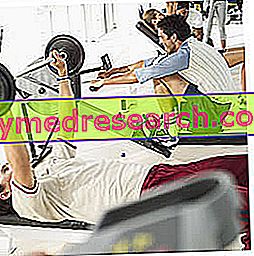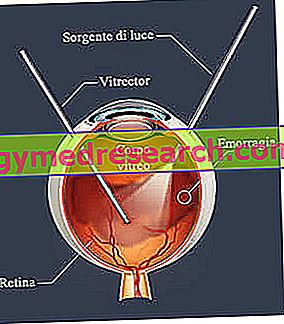By Dr. Davide Traverso
Cross-training or "cross-training" is the training technique that allows, through the practice of different sports, even in contrast with one another, to increase the starting level of performance or fitness. The basic idea was born from the dawn of triathlon, when athletes engaged in the three activities showed they could achieve high performance in the single disciplines. We began to study how a training based on an athletic gesture (for example, running) could improve performance in a different discipline (for example swimming).

What is physical fitness?
The media represent the physical form as a beautiful body to look at, according to the aesthetic parameters of our times: the woman must be thin and the muscular man without a little fat. In my holistic thinking the physical form is something else: it is harmony, yes, of the forms, but above all of the movements. The person in shape must be able to express all his physical qualities to the fullest, that is:
strength, resistance, elasticity and balance
which represent the four columns of fitness. The person who will develop these four qualities harmoniously will have a body that is beautiful to look at, but above all functional and will enjoy good health. First of all, cross fitness must be a functional training, that is aimed at improving the body's functions.
Physical types
To prepare a truly effective program we must take into account a number of factors specific to the subject in question. One of these factors, in my opinion essential, is its physical type. Many authors have created classifications on physical types; a classification that can be useful to our work is that which foresees 5 somatotypes, of which 3 basic and 2 intermediate.
mesomorph
The athletic type par excellence. Trunk relatively long but well developed, with excess of thorax on the abdomen, skeleton and particularly robust muscles. We are facing Leonardo's man. These subjects are brought for every sport, mentally active and committed. In front of people belonging to this somatotype our work will be much easier, we can propose a program articulated between the different activities, of strength and resistance, leaving space to the customer to decide his preferences; the results will come quickly.
endomorph
People belonging to this biotype will have a tendency to be overweight, in particular they will accumulate fat on the abdomen. Brevilinee with relatively short limbs and neck, with low muscle tone. Mentally lively and expansive. Thanks to short levers such subjects easily develop strength, but their main problem is the difficulty in losing weight. It is natural to think of proposing to people of this biotype programs focused on aerobic activity; we will easily lose the customer who, faced with a program that is physically difficult for him, will tend to abandon. Instead we exploit its qualities, we draw up a program for the development of muscle mass in a controlled diet. We will understand logically also the activities for the development of the resistance, but gradually introducing them, framing them in a context of socialization (the spinning lesson, the walk or run in the company), so that the client also becomes passionate about this type of training.
ectomorph
Long-limbed tendency, with a delicate skeleton, a lacking musculature, a basically flat abdomen, long and thin limbs. Mentally nervous and introverted. Body fat is almost non-existent and the development of muscle mass is problematic. As in the previous case it is easy to fall into easy conclusions about what the ideal program could be. We try to use a strength development program based on natural-load exercises; thanks to the relative lightness of the body, the client belonging to this biotype will find it easier to perform these exercises and will be gratified. We use the work for the resistance as our client will have to carry out an activity for which he is physically brought and will derive the maximum benefit.



